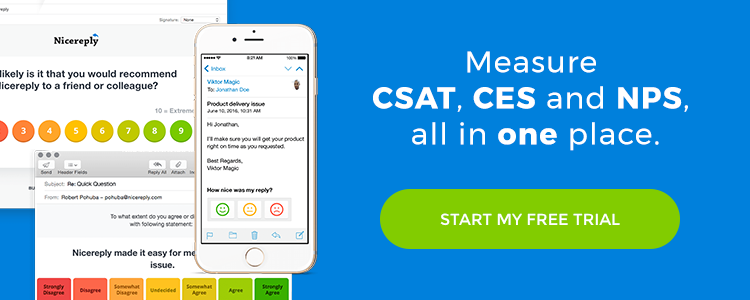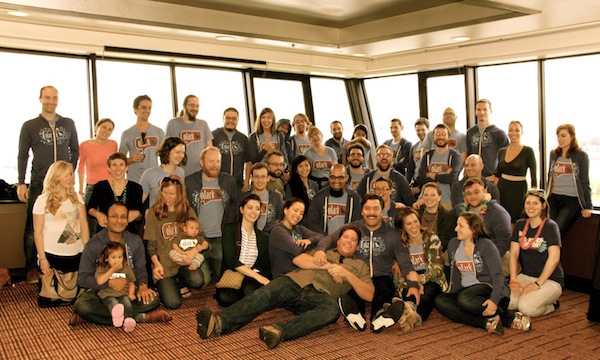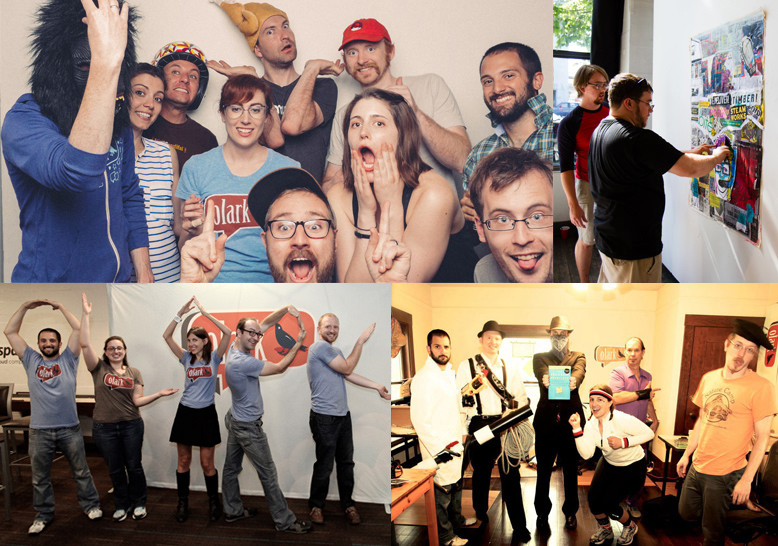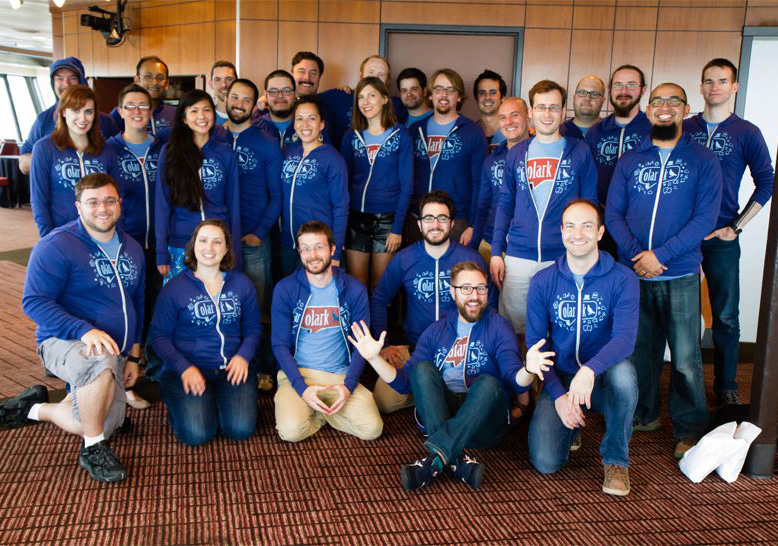About a month ago guys at Olark announced crossing 10,000 paying customers. Focus on customer service has played a huge part in their getting to this point, from their early days of four people, to a growing team of Olarkers. This is a perfect opportunity to bring you an interview with Ryan LaBarge, Technical Support Samurai at Olark about the role of customer service on this huge success.
The Culture around Customer Service
In their own words: “From day one, we wanted to be aspirational. We wanted to show the potential for live chat, and what you could achieve if you built a culture around customer service. The nice thing is, the type of customer service that’s done over live chat often drives sales, so not only are our customers getting great service, it’s also boosting our conversion rates. And, our customers say the same thing, Live chat helps you be in the right place at the right time and it pays off through stronger relationships and more sales.”
1. What does good customer service mean for you?
Great customer service is really about understanding your customers, and how they want to be served.
There are a lot of basics: be available to help when a customer needs help; respond quickly; treat customers like real people, not simply transactions; use context to offer a more personalized experience; empower your agents to solve problems directly; don’t optimize for resolution time
I think the real challenge with customer service, is not knowing what to do, but really scaling the process so that it still works when you have 10, 20, 1000, 100,000 paying customers.
2. What was the difference between supporting your users in early days of Olark and how it’s today?
Operationally it’s changed quite a bit, but the culture of service is still the same.
In the early days, we knew great customer service would be a differentiator for us. We started off by hiring one person to handle customer communication, but we quickly realized that by having a filter between us and our customers we were losing important feedback, feedback that was vital to the success of our small bootstrapped company.
Companies live and die by their customer understanding, and we were heading in the wrong direction.
To make sure that we could all benefit from talking directly to our customers, we developed a system we call All Hands Support. All four of us founders would take turns on customer support so everyone working on the product would have regular access to customer feedback.
As we grew and started to hire, we held on to this idea and continued to incorporate it throughout our entire organization. We now have 30 teammates. Early on we added a dedicated customer service team, but we augment this team by having every single employee at Olark use our product to support our customers on a biweekly basis. This does a few things: it keeps us in tune with customer pain points, requests and positive feedback; gives us a better view of the product from the customer’s perspective; and helps unify the entire team around customer service and serving our customers.
3. How does “All hand Support” improved your overall business?
At Olark, customer service is at the center of our business. In our distributed team, customer service is the place where Olarkers collaborate with other teams the most. Customer service is the common cultural experience for everyone at Olark, the unifying thing that everyone has in common: Office Ops, DevOps, Engineering, Marketing, Founders, Customer Service we all directly serve our customers.
Each group at Olark gets something unique out of the process. Marketing gets a better understanding of our product, office ops understands our core business, customer service knows that more of the organization is empathetic towards customer needs. As CEO, I get frontline first hand interactions with new customers.
AHS is one sure way to build a customer centric culture, and businesses exist to serve customers.
4. How big is your customer service team now and how many cases do you handle every day?
Well, technically our customer service team is our entire company, so 30+ people.
But, really we have seven team members who are fully dedicated to service, and another 3 engineers who are our ‘triage’ team that tackles more difficult questions and catalogs feature requests.
During the week we typically answer more than 200 chats a day, as well as about as many email tickets.
5. Do you’ve any training program for new customer support Olarkers?
Absolutely! Every single new Olarker goes through support onboarding, because, everyone does customer service. Our team has created a specialized onboarding process involving a variety of lessons, written resources, and ‘ride along’ with the support team.
The formal onboarding process is only a few weeks, but the larger product familiarity process goes on for much longer, and new Olarkers are able to get help from the CS team on an ongoing basis.
6. What is its main focus, product knowledge or communication skills?
We focus more on communication skills in the onboarding. Live chat has a certain ebb and flow that takes some getting used to, especially trying to understand the customer’s question before answering. After that, we try to familiarize each new Olarker with our help section, so they can point customers to helpful articles.
Product knowledge comes with time and we always have technical support team members online, so if a new operator gets stuck, they can transfer the chat or ask for help behind the scenes.
7. What KPI are you using to measure your customer service performance?
We look at a bunch of data. Overall volume, re-open rates for email tickets, time to first response, ratings through Nicereply and Olark’s own customer satisfaction ratings.
8. Do you set any weekly/monthly goals that you trying to achieve with your team?
Our support team orients more around specific projects they are trying to accomplish, rather than specific metric driven goals. Many projects have been designed to create more customer resources, improve support onboarding, and reduce overall volume. To be honest there are so many variables we often have a hard time tying projects to specific outcomes.
9. Do you have a funny story from your customer service that you would like to share with us?
My favorite customer service story is actually a story I heard from an Olark Customer, BarkBox. BarkBox has this whole language that they use to talk to their customers. For example, instead of “Awesome”, they’ll say “Pawsum”, and they often bark, and wuf with their customers over Olark. I just love that creative thinking and customized customer response.
Hope you enjoyed this great interview with Ryan LaBarge about the culture of Olarkers. Stay tuned for next stories of Nicereply customers.







